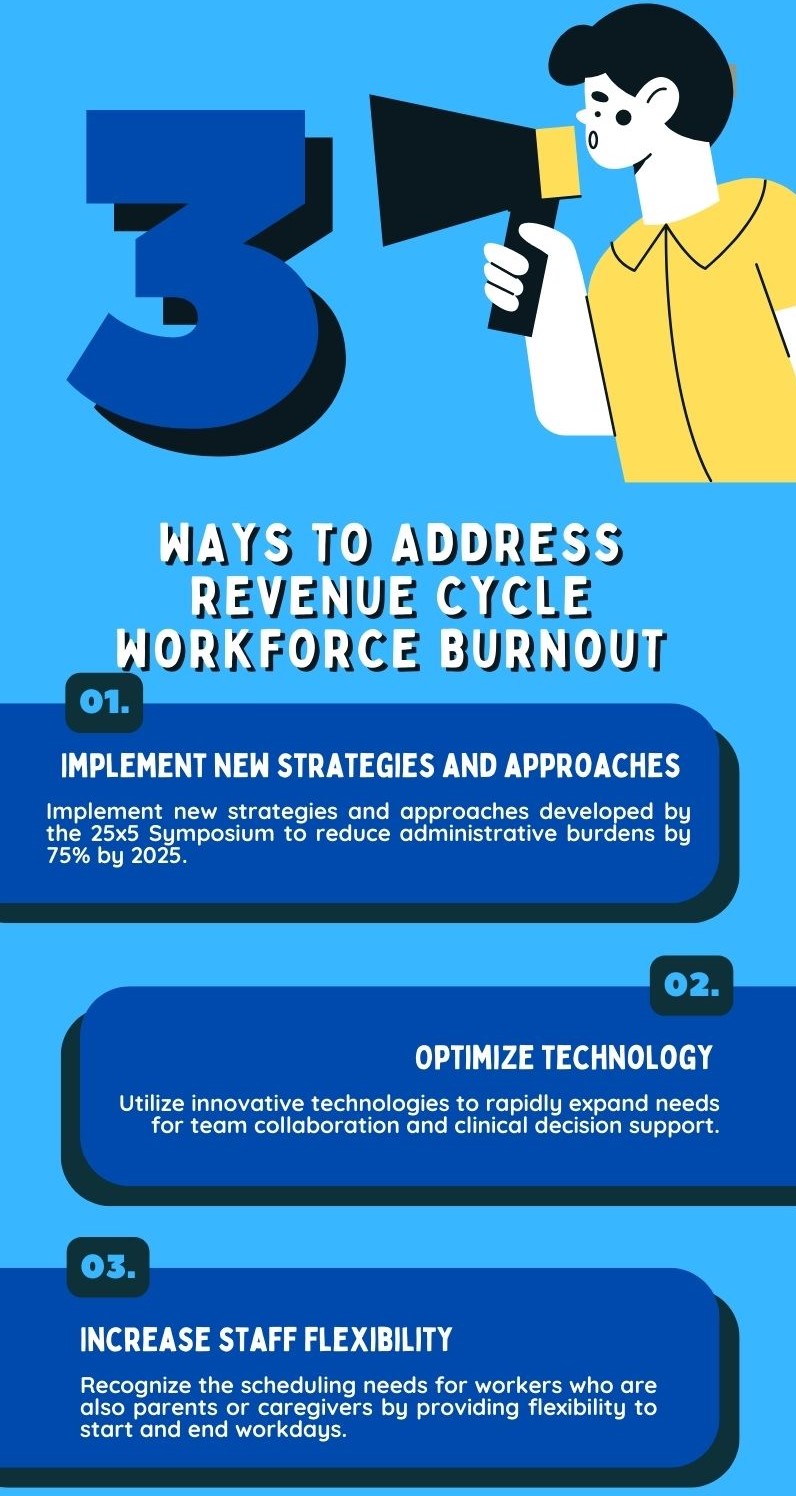An advisory published by the U.S Surgeon General takes aim at healthcare workforce fatigue and shines light on three remedies that leaders can apply to revenue cycle staff to ward off burnout.
Surgeon General Vivek Murthy, MD, issued an advisory on building a thriving healthcare workforce that included three ways organizations can help revenue cycle staff avoid burnout, including reexamining time spent on prior authorizations.
According to the advisory, inefficient work processes, burdensome documentation requirements, and limited autonomy can result in negative patient outcomes, a loss of meaning at work, and health worker burnout.
"As we transition towards recovery, we have a moral obligation to address the long-standing crisis of burnout, exhaustion, and moral distress across the health community. We owe health workers far more than our gratitude. We owe them an urgent debt of action," Murthy says.
The advisory gives three examples that organizations can apply to revenue cycle staff to help remedy burnout.

1: Implement new strategies and approaches
Implement new strategies and approaches developed by the 25x5 Symposium to reduce administrative burdens by 75% by 2025 so that health workers can spend more time with patients.
Example opportunities include reviewing and improving staffing, scheduling, and care team delegation plans. According to the advisory, this includes adding scribes or automating data collection for any needs that are secondary to clinical care such as billing, quality reporting, and other local healthcare system or regulatory requirements.
The advisory also suggests reviewing the volume of and requirements for prior authorizations together with health workers, streamlining fax-based work such as prior authorizations to electronic and automated systems, reducing duplicative work, and ensuring usability of EHRs.
De-implementation checklists can help address common administrative burdens in the workplace.
In this instance, the advisory points to Hawaii Pacific Health’s "Getting Rid of Stupid Stuff" program that asked employees to assess their experiences with the EHR and nominate tasks to eliminate that they found either unnecessary or poorly designed. This program resulted in 1,700 nursing hours saved per month across their health system.
2: Optimize technology
The advisory recommends health systems optimize technology to increase time spent between health workers and patients.
Example opportunities include simplifying EHR-based workflows and addressing patient and health worker usability issues with virtual care. Organizations can also utilize other innovative technologies to rapidly expand needs for team collaboration and clinical decision support, the advisory says.
3: Increase staff flexibility
Increasing work schedule flexibility and autonomy is an important aspect of avoiding revenue cycle staff burnout.
An example opportunity the advisory gives includes recognizing the scheduling needs for workers who are also parents or caregivers by providing flexibility to start and end workdays. This can help reduce staff stress and demonstrates an organization’s compassion, it says.
Other examples include opportunities for health workers to schedule their preferred off days, options to use virtual care when appropriate, job-sharing/periodic coverage options by hiring internal or external temporary contract workers, and shifting tasks and decision making across a team, the advisory says.
Amanda Norris is the Director of Content for HealthLeaders.
